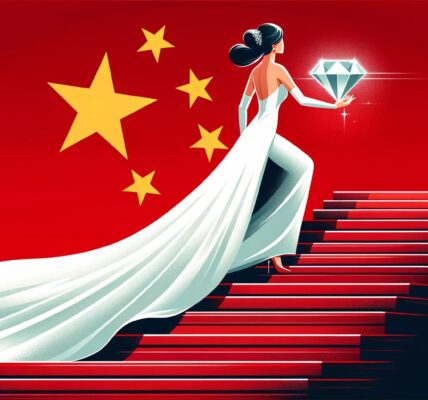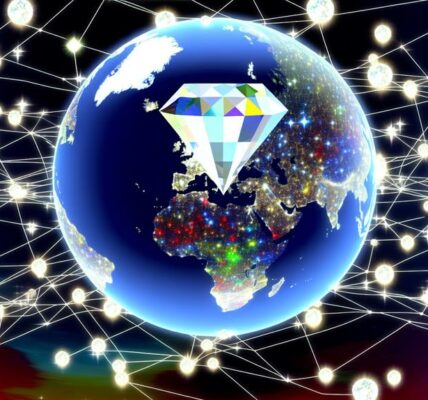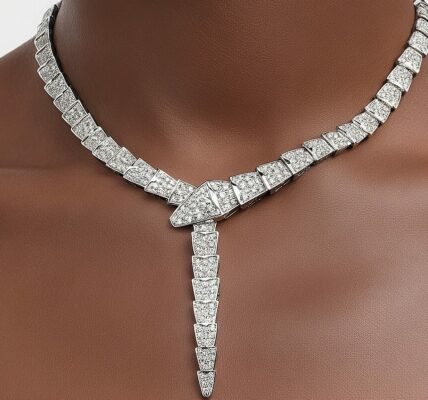The Asia-Pacific region is a powerhouse in the global diamond market, greatly increasing its value to $41.5 billion. This growth is mainly driven by rising incomes and a burgeoning middle class in countries such as China and India. These nations have a cultural affinity for diamond jewellery, especially during weddings and festive occasions. Millennials and Gen Z in Asia are driving a shift towards online diamond purchases, favouring sustainable and lab-grown options. The market is set to expand as urbanisation fuels demand, with economic changes in emerging countries offering diverse opportunities. Look forward to further insights on diamond trends.
Article Contents
- 1 Article Highlights
- 2 Market Size and Growth
- 3 Key Drivers in Asia Pacific
- 4 Demand and Consumer Trends
- 5 Role of Synthetic Diamonds
- 6 Regional Market Analysis
- 7 Future Growth Projections
- 8 Frequently Asked Questions
- 8.1 What Are the Challenges Facing the Diamond Market in the Asia Pacific Region?
- 8.2 How Does Climate Change Impact Diamond Mining in Asia-Pacific?
- 8.3 Are There Any Regulatory Changes Affecting the Diamond Trade in the Asia-Pacific?
- 8.4 What Role Do Local Cultures Play in Diamond Design Preferences?
- 8.5 How Do Geopolitical Tensions Affect Diamond Sourcing in Asia Pacific?
- 9 Our Closing Thoughts
Article Highlights
- The economic growth in the Asia Pacific region is increasing the demand for diamonds, driven by the consumption of luxury items in China and India.
- In 2021, the region accounted for 51% of the global synthetic diamond market.
- The rising incomes of the middle class in the Asia Pacific are boosting the demand for ethical and sustainable diamonds.
- Urbanisation in Asia Pacific countries such as Vietnam and Indonesia is enhancing the growth of the diamond market.
- The expansion of e-commerce in the region is facilitating increased diamond sales and improving consumer accessibility.
Market Size and Growth
Demonstrating robust growth, the global diamond market experienced a solid increase from USD 98.3 billion in 2022 to USD 101.9 billion in 2023. This upward trajectory underscores the market’s resilience and adaptability, driven by strategic market segmentation and a dynamic competitive landscape. The market is segmented primarily into natural and synthetic diamonds, with natural diamonds leading at USD 63.18 billion, while synthetic counterparts reached USD 38.72 billion in 2023. Jewellery and ornaments dominated with a commanding 65% market share, highlighting the enduring allure of diamonds in personal adornment.
The competitive landscape within the diamond industry is characterised by a significant presence of key players, each striving to capture higher shares through innovation and strategic positioning. North America, particularly the U.S., remains a formidable force, with the region holding a 55.22% share in 2023. As the market continues to evolve, the emphasis on lab-grown diamonds is remarkable, with projected sales reaching USD 11 billion in 2024.
A notable trend is the shift towards colourful and innovative jewellery designs, which further indicates the market’s responsiveness to changing consumer preferences. These developments reflect a broader trend towards diversification within the industry, catering to a consumer base increasingly attuned to ethical and sustainable practices, thereby ensuring continued growth and market relevance.
The Asia Pacific region is experiencing the fastest growth, driven by a rising middle class that is significantly influencing diamond consumption trends.
Key Drivers in Asia Pacific
The burgeoning affluence and expanding middle class in the Asia Pacific are crucial forces driving the region’s diamond market growth. Economic advancement in countries like China and India has resulted in greater disposable incomes, encouraging investment in luxury items, particularly diamond jewellery. The region’s cultural significance of diamonds further fuels demand, with these precious stones being integral to wedding traditions, festivals, and symbolising prosperity and love.
Traditional jewellery craftsmanship remains an essential element, preserving cultural heritage while enhancing the appeal of diamonds. The Asia Pacific region held 51% of the global synthetic diamond market in 2021, driven by the expanding jewellery industry.
Technological advancements and e-commerce are reshaping the diamond market landscape. The rise of lab-grown diamonds offers sustainable and ethically considerate options, appealing to the environmentally conscious consumer. However, the market faces competition from lab-grown diamonds and ethical sourcing concerns.
Meanwhile, digitalisation is transforming purchasing behaviours, with increased internet penetration and smartphone usage facilitating access to diamond products via online platforms. This shift to e-commerce is crucial in expanding the market reach, particularly in emerging economies enthusiastic about modern lifestyle choices.
In response to ethical considerations, consumers increasingly demand transparency in sourcing and production. This demand underscores the significance of sustainable practices, with ethical sourcing becoming a notable factor in purchasing decisions.
Consequently, diamond retailers and manufacturers are adapting to meet these evolving consumer expectations.
Demand and Consumer Trends
The Asia Pacific diamond market is experiencing robust growth driven by evolving consumer behaviour trends and demographic dynamics. The region’s economic growth and rising disposable incomes have fostered a burgeoning middle class with improved purchasing power. This demographic shift has led to increased demand for luxury goods, including diamond jewellery, particularly during significant life events such as weddings and festivals.
Urbanisation and lifestyle changes further amplify consumer preferences for these exquisite items, with millennials showing a pronounced inclination towards diamond adornments. Natural diamonds dominate the market, as they are primarily used in jewellery, reflecting a preference for traditional luxury items. Consumer preferences in the Asia Pacific are heavily influenced by sustainability, ethical sourcing, and transparency, reflecting a global shift in purchasing behaviour. As internet penetration and smartphone usage surge, e-commerce platforms are becoming pivotal avenues for acquiring these luxury items, offering consumers the freedom to investigate and purchase with ease.
The market dynamics across diverse countries like China, India, and emerging markets such as Vietnam and Indonesia, present expansive opportunities for growth. Online sales channels are gaining traction alongside traditional retailers, enhancing accessibility and providing personalised shopping experiences. The middle class is expected to channel more financial resources into acquiring luxury goods, while women, in particular, favour delicate diamond pieces. Consequently, the Asia Pacific diamond market is poised for sustained expansion, driven by these compelling consumer trends.
Role of Synthetic Diamonds
Amidst changing consumer preferences in the Asia Pacific diamond market, synthetic diamonds have emerged as a significant player. Their appeal lies in several factors, particularly the intersection of sustainability initiatives and technological advancements. As the market shifts towards more eco-conscious consumption, synthetic diamonds offer a compelling alternative, reducing the environmental footprint associated with traditional diamond mining.
The Asia Pacific region generated USD 8.3 billion in 2023 and is expected to reach USD 14.3 billion by 2032, driven by rapid industrialisation and demand in electronics.
- Market Growth: The synthetic diamond market is projected to surge from USD 23.9 billion in 2023 to USD 41.6 billion by 2032, driven by a 6.1% CAGR. This growth is underpinned by increased demand in the Asia Pacific region, which accounted for 51% of the global market in 2021. China’s production of 20 million carats in 2022 represents 40%-50% of global production, highlighting its pivotal role in this growth.
- Cost Efficiency: Wholesale prices for synthetic diamonds have decreased by 87% since 2018, making them more accessible. This price drop, coupled with advanced manufacturing technologies like HPHT and CVD, improves quality while reducing costs.
- Industrial Applications: Beyond jewellery, synthetic diamonds excel in industrial uses due to their hardness and durability, especially in cutting and grinding tools, which constitute 35.8% of the market.
These factors collectively highlight the pivotal role of synthetic diamonds in shaping a sustainable and technologically advanced future for the diamond industry.
Regional Market Analysis
In the Asia Pacific region, economic growth and expanding middle class dynamics are pivotal drivers of the diamond market’s expansion. The surge in disposable incomes and a growing urban population foster a robust demand for luxury goods, including diamonds. This regional prosperity, combined with the cultural impact of diamonds as symbols of status and wealth, particularly in nations like China and India, amplifies the market’s allure. Regional comparisons reveal that China and India lead in market contributions, with China holding a dominant position due to its substantial industrial applications and consumer demand.
Meanwhile, India’s market is fuelled by its deep cultural affinity for diamonds, often associated with significant life events. The global diamond market was valued at USD 96.4 billion in 2022, highlighting the substantial contribution of the Asia Pacific region. Emerging economies like Vietnam, Indonesia, and Thailand are also witnessing increased demand, reflecting diverse market dynamics across the region. Online sales channels and the influence of Gen Z are reshaping how consumers engage with the diamond market, promoting a shift towards digital and phygital retail experiences.
This transformation is complemented by an increasing consciousness around sustainability, driving interest in responsibly sourced and lab-grown diamonds. As the Asia Pacific market continues to evolve, its impact on the global diamond landscape remains substantial. The market size forecast for China is USD 18,613.56 million with a CAGR of 7.1%, indicating its strong influence in shaping future trends.
Future Growth Projections
Driven by economic growth and technological advancements, the future of the global diamond market appears promising. Projections suggest the market will expand considerably, reaching USD 50.23 billion by 2030 with a CAGR of 3.3% from 2025 to 2030. This growth is fuelled by increasing consumer demand for luxury goods, rising disposable incomes in emerging economies such as China and India, and the expansion of e-commerce platforms improving market accessibility.
Asia Pacific, having held 29. 0% of the global diamond market revenue in 2024, continues to contribute significantly to this upward trajectory. The market encompasses various segments, with consumers favouring diamonds for both gemstone and industrial applications. Moreover, Asia Pacific’s growing disposable income and consumer demand for luxury items have driven the sales of diamond jewelry in the region. As a result, global diamond prices have seen an increase, with Asia Pacific playing a key role in driving this trend. Additionally, the region’s expanding industrial sector has also fueled the demand for industrial diamonds, further contributing to the growth of the global diamond market.
These factors create a robust environment for investment strategies, yet market challenges remain.
Key considerations for stakeholders include:
- Market Segmentation Trends: Jewellery and ornaments dominate the sector, with natural diamonds being the preferred choice, capturing 93.8% of the type segment in 2023. However, synthetic diamonds, appealing to eco-conscious consumers, are growing at a CAGR of 8.8% from 2024 to 2030.
- Economic Impact: The Asia Pacific region is projected to grow at a CAGR of 3.5% from 2023 to 2030, driven by an escalating demand for high-end products and luxury goods.
- Forecast Period Insights: By 2033, the market is expected to reach USD 146.5 billion, guided by strategic partnerships and technological improvements that bolster market presence and distribution networks.
Frequently Asked Questions
What Are the Challenges Facing the Diamond Market in the Asia Pacific Region?
The diamond market in the Asia-Pacific region faces challenges such as fluctuating supply chains, ethical sourcing scrutiny, heightened market competition, and shifting consumer preferences towards sustainable options, all demanding strategic adaptation for continued growth and freedom in consumer choice.
How Does Climate Change Impact Diamond Mining in Asia-Pacific?
Ah, climate change, the planet’s gentle reminder of our freedom to choose sustainable practices. In the Asia-Pacific, diamond mining’s environmental impact is magnified, demanding a shift away from carbon-heavy methods towards greener, eco-conscious alternatives.
Are There Any Regulatory Changes Affecting the Diamond Trade in the Asia-Pacific?
Regulatory changes affecting the diamond trade in the Asia-Pacific region include evolving global regulatory frameworks and trade agreements. These shifts, driven by international sanctions and the rising synthetic diamond markets, impact supply chains and necessitate adaptive strategies for sustainable growth.
What Role Do Local Cultures Play in Diamond Design Preferences?
While some may perceive diamond design limitations, local cultures greatly influence design aesthetics, blending cultural symbolism with unique artistry. This cultural fusion allows individuals the freedom to express identity through personalised, meaningful diamond jewellery, enhancing emotional connections.
How Do Geopolitical Tensions Affect Diamond Sourcing in Asia Pacific?
Geopolitical tensions complicate diamond sourcing in the Asia-Pacific by influencing supply chains and increasing costs. Sanctions and regional conflicts disrupt traditional sources, necessitating creative approaches to secure ethically and sustainably sourced diamonds for freedom-seeking consumers.
Our Closing Thoughts
The Asia Pacific region‘s influence on the global diamond market is akin to a rising tide lifting all boats. With the market reaching £41.5 billion, demand surges in countries like China and India drive growth. The increasing popularity of synthetic diamonds adds a new dimension, offering sustainable alternatives. As these dynamics evolve, the region is expected to continue steering the market forward, much like a skilled conductor leading an orchestra to a harmonious crescendo.




